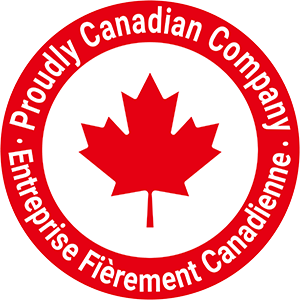Combining The Five Dysfunctions of a Team and The Predictive Index: A Talent Optimization Blueprint
By Adrienne Reilly |
5.9 min read
Combining The Five Dysfunctions of a Team and The Predictive Index: A Talent Optimization Blueprint by Predictive Success
High-performing teams don’t emerge by accident—they’re designed with intention. Combining The Five Dysfunctions of a Team and The Predictive Index, delivered by Predictive Success Corporation, gives leaders a powerful framework to identify barriers to team performance and apply data-driven solutions to overcome them. Together, these tools help organizations move beyond dysfunction to achieve true talent optimization.

Why Combine Lencioni’s Model with The Predictive Index?
Lencioni’s model diagnoses the “human barriers” to effective teamwork, while PI provides the scientific solutions to overcome those barriers. By combining The Five Dysfunctions of a Team and The Predictive Index, leaders gain a blueprint for moving from theory to measurable results.
-
Translate dysfunctions into specific, trackable actions.
-
Provide objective data instead of relying on gut instinct.
-
Enable ongoing improvement by tracking team alignment and engagement.
In short, Lencioni defines what dysfunction looks like. Predictive Success and PI provide the how to fix it.
Dysfunction 1: Absence of Trust
Lencioni’s Insight: Trust is the foundation of teamwork. Without vulnerability-based trust, team members avoid admitting weaknesses, asking for help, or acknowledging mistakes.
The PI Solution with Predictive Success:
-
Behavioral Assessment: Measures natural drives across four factors—Dominance, Extraversion, Patience, and Formality. When leaders understand these drivers, they can recognize why someone may be reluctant to open up. For example, a team member with low Extraversion may appear withdrawn but is not necessarily disengaged.
-
Team Discovery™ Tool: Compares behavioral profiles to uncover natural tensions and blind spots. This transparency fosters empathy and mutual understanding.
-
Practical Example: A leader sees that two team members are both high Dominance, low Patience. Rather than interpreting their clashes as personal, the leader recognizes this as a predictable behavioral pattern and can mediate with trust-building exercises.
➡️ Result: Teams create a culture of psychological safety, where differences are acknowledged and respected instead of hidden or misunderstood.
Dysfunction 2: Fear of Conflict
Lencioni’s Insight: Without trust, teams shy away from healthy debate. This results in artificial harmony, unresolved issues, and slow decision-making.
The PI Solution with Predictive Success:
-
Relationship Guides: Provide leaders with one-on-one insights into how two people might naturally collaborate—or clash. This foresight helps managers coach team members through difficult conversations before they escalate.
-
Cognitive Assessment: Explains how quickly individuals process information and make decisions. Misunderstandings often stem from different processing speeds, not personality conflicts.
-
Practical Example: A manager notices that a high-Cognitive employee grows frustrated with a lower-Cognitive colleague’s pace. Using PI data, the leader reframes the situation, teaching the team how to debate constructively while valuing different contributions.
➡️ Result: Teams learn to embrace conflict as a driver of innovation rather than a threat to harmony.
Dysfunction 3: Lack of Commitment
Lencioni’s Insight: When teams don’t engage in open debate, decisions lack clarity and buy-in. This leads to half-hearted execution and second-guessing.
The PI Solution with Predictive Success:
-
Strategy Assessment: Aligns leadership teams on organizational goals. It highlights whether the team’s behavioral strengths support or conflict with the strategy. The new PI Outcome Strategy document makes these insights even clearer.
-
Job Targeting: Ensures individuals are in roles that align with their natural behavioral drives, increasing personal clarity and motivation.
-
Team Discovery™: Visualizes areas of alignment and misalignment, creating shared awareness around execution risks.
-
Practical Example: A product launch team realizes their strategy demands patience and detail-orientation, but their behavioral profiles skew heavily toward fast-paced, risk-taking styles. Recognizing this gap, leaders assign support roles and implement processes to ensure thoroughness.
➡️ Result: Teams commit with confidence, knowing the strategy fits both the business and their collective behavioral strengths.
Dysfunction 4: Avoidance of Accountability
Lencioni’s Insight: Without shared commitment, individuals hesitate to hold each other accountable for behaviors or performance that undermine the team.
The PI Solution with Predictive Success:
-
PI Inspire & Coaching Tools: Provide data-backed coaching tips tailored to each team member’s unique behavioral profile, giving leaders and peers a shared language for accountability.
-
Management Training: Equips leaders with the tools and confidence to address underperformance or misalignment directly.
-
Role Clarity: PI behavioral analytics help clarify expectations based on individual motivators, ensuring accountability feels fair and achievable.
-
Practical Example: A sales leader uses PI data to highlight that a team member with low Dominance may avoid direct confrontation. With coaching, the team member learns to provide feedback in ways that align with their natural style but still drive accountability.
➡️ Result: Accountability becomes a cultural norm rather than a top-down mandate.
Dysfunction 5: Inattention to Results
Lencioni’s Insight: When individuals prioritize personal recognition or departmental wins over collective success, overall performance suffers.
The PI Solution with Predictive Success:
-
Team Performance Dashboard: Tracks whether the team’s behavioral makeup aligns with desired outcomes, creating real-time visibility.
-
Job Models for the Future: By updating job models for 2026 and beyond, organizations can ensure leadership and team structures stay aligned with evolving business strategies.
-
Employee Experience Surveys (Design Phase): Capture ongoing feedback to measure engagement and alignment with team objectives.
-
Practical Example: A marketing department uses PI surveys to reveal that employees feel siloed from sales. By surfacing this insight, leaders initiate cross-functional projects that tie both teams to a shared revenue goal.
➡️ Result: Teams shift focus from individual achievements to collective success, ensuring alignment with organizational priorities.
From Dysfunction to Alignment
When applied together, combining The Five Dysfunctions of a Team and The Predictive Index creates a powerful blueprint for high performance. One diagnoses barriers; the other provides solutions.
| Dysfunction | PI Tool | Outcome |
|---|---|---|
| Absence of Trust | Behavioral Assessment | Psychological safety & trust |
| Fear of Conflict | Relationship Guide & Cognitive Assessment | Constructive conflict |
| Lack of Commitment | Strategy Assessment & Job Targeting | Strategic alignment |
| Avoidance of Accountability | Coaching Tools & Management Training | Cultural ownership |
| Inattention to Results | Team Analytics & Surveys | Team-based success metrics |
When leaders apply PI insights through the lens of Lencioni’s model, they unlock the ability to optimize talent at every level.
The Business Case for Talent Optimization
Research consistently shows that cohesive teams outperform misaligned ones in profitability, innovation, and retention. But the cost of dysfunction is high:
-
Reduced productivity due to unclear expectations.
-
High turnover when employees feel disengaged.
-
Missed opportunities from lack of collaboration.
By combining The Five Dysfunctions of a Team and The Predictive Index through Predictive Success, organizations don’t just solve “people problems”—they align people with strategy, creating measurable business outcomes.
Call to Action
The question isn’t whether your teams face dysfunction—every team does. The real question is: What are you doing about it?
By combining The Five Dysfunctions of a Team and The Predictive Index with Predictive Success’ PI-powered solutions, leaders can move their teams from dysfunction to alignment. It’s about putting the right people in the right seats, working on the right things, the right way.
👉 Ready to transform your teams? Connect with Predictive Success today and discover how we can help your organization build trust, embrace conflict, commit fully, hold each other accountable, and focus relentlessly on results https://www.predictivesuccess.com
Related Blogs
Layoffs vs. Furloughs: What’s the Difference and Which Is Better for Employers?
Layoffs vs. Furloughs: What's the Difference and Which Is Better for Employers? Economic uncertainty, market shifts, and rapid organizational change force leaders to make difficult workforce decisions. One of the most common challenges leaders face
5 Types of Communication Styles and How to Use Them Effectively
The 5 Communication Styles and How to Use Them Effectively Communication is the foundation of every successful business interaction, whether you are leading a strategic planning session, managing change, coaching a team member, or sharing
Average Typing Speed (WPM): What’s Good, What’s Fast and How to Improve
Average Typing Speed (WPM): What’s Good, What’s Fast, and How to Improve Whether you’re a student, professional, or casual computer user, typing efficiently can save you countless hours each year. But how do you know



